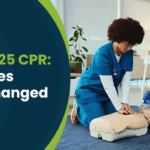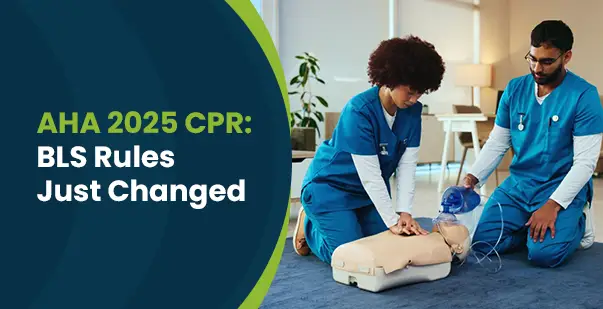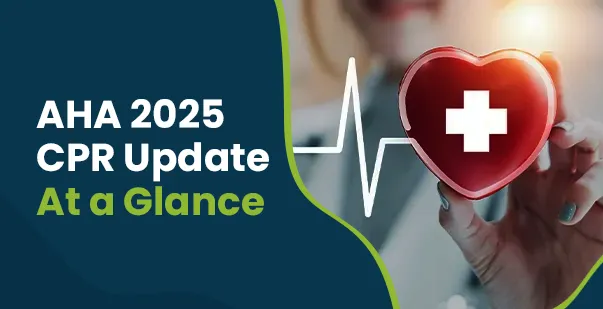Heat exhaustion symptoms can be subtle but dangerous, requiring being detected before they escalate. The risk of heat-related diseases increases with rising temperatures. In the USA alone, extreme heat is linked to an estimated 1,373 additional deaths each year, highlighting the severity of this often-overlooked threat. Whether you’re working outside, working out, or just soaking in the summer heat, knowing how to be safe is important.
Understanding Heat Exhaustion
Heat exhaustion results from an overheated body unable to cool itself effectively. Your body usually cools via sweating, but sometimes, this isn’t enough. Your body’s cooling mechanism strains under heat exhaustion. While sweat production could rise, evaporation decreases. This causes central temperature to increase and strains important organs.
Several factors raise your chance of heat exhaustion:
Age
Certain age groups, like young children and older adults, are at higher risk for heat exhaustion.
- Older adults and little children are more vulnerable.
- Children lose less sweat and generate more heat.
- Seniors could be on medications that interfere with heat control or have chronic diseases.
Health
Pre-existing health conditions, such as obesity and heart disease, can hinder the body’s ability to cool down.
- Obesity could prevent heat loss.
- Heart diseases might lower the body’s cooling capacity.
Occupation
Outdoor workers and athletes face increased exposure to heat, raising their risk of heat exhaustion.
- Workers outside spend more time in the sun.
- Athletes run the danger of overexertion under heat.
Environment
Environmental factors, like high humidity and urban heat islands, can exacerbate the risk of heat exhaustion.
- High humidity reduces evaporative sweating.
- Cities trap heat more than rural places.
Early recognition of heat exhaustion symptoms is very important. Early response helps to stop it from developing into a life-threatening disorder known as heatstroke.
Must Read: The Importance of BLS for Police Officers: How it Can Save Lives?
Causes of Heat Exhaustion
Heat exhaustion is caused by a complex interaction of environmental, physiological, and personal elements. Awareness of these factors and staying safe are crucial for preventing and properly treating this potentially harmful illness.
Environmental Factors
Heat exhaustion develops greatly from the external circumstances around a person. These factors can greatly affect the body’s ability to maintain its normal temperature.
High Temperatures
The main reason for heat exhaustion is extended hot weather. The body’s natural cooling systems may become overwhelmed by soaring ambient temperatures. The human body works continually to maintain a steady internal temperature of around 98.6°F (37°C). When outside temperatures increase, especially above body temperature, the body has to work harder to disperse heat. This extra work might cause stress on several body systems, leading to heat exhaustion.
High Humidity
The body’s capacity to cool itself depends heavily on humidity. When humidity is high, sweat does not evaporate as readily from the skin, reducing the primary cooling process the body uses. Even if someone is sweating heavily in excessively humid conditions, they cannot get the usual cooling benefit connected with sweating. This may raise body temperature quickly and increase the likelihood of heat exhaustion.
Direct Sunlight
Spending a long time in the sunlight can raise body temperature significantly. Along with heating the air around us, solar energy directly warms our skin and underlying tissues. Especially in combination with high ambient temperatures, this extra heat load may rapidly overwhelm the body’s cooling mechanisms. Prolonged sun exposure without adequate protection or breaks in shaded areas can accelerate the onset of heat exhaustion.
Lack of Air Circulation
Poor ventilation in enclosed areas may retain heat and complicate the body’s cooling ability. In stagnant conditions, the layer of air immediately around the body may become saturated with heat and humidity. This lessens the temperature gradient separating the body from its surroundings, therefore impeding heat loss. Two processes that help sweating to evaporate and heat to be transferred away from the body depend on enough air circulation.
Physiological Factors
Internal body systems and personal behavior may influence one’s sensitivity to heat exhaustion. Many times, these physiological elements interact with surroundings to raise the risk of overheating.
Dehydration
Not enough fluid can seriously compromise the body’s capacity to regulate temperature. Dehydration lowers blood volume, which makes it more difficult for the body to get blood to the skin for cooling. It also decreases the body’s ability to generate sweat, its primary cooling agent. Especially in hot environments or during strenuous activity, even minor dehydration can greatly raise the risk of heat exhaustion.
Strenuous Physical Activity
Extreme exertion or effort in hot temperatures can quickly cause heat exhaustion. Muscle contractions in physical exercise cause the body to produce more heat. This internal heat generation, combined with outside heat, can rapidly overwhelm the body’s cooling systems in hot environments. Excessive sweating during vigorous exercise can cause quick fluid and electrolyte loss, thus aggravating the risk of heat-related illnesses.
Alcohol Consumption
Alcohol can seriously disrupt the body’s thermoregulation and cause dehydration. Acting as a diuretic, it stimulates fluid loss through increased urine output. Furthermore, alcohol can widen blood vessels close to the skin’s surface. This produces a sensation of warmth but eventually causes faster heat loss in cold conditions and may mask the body’s warning signals of overheating in hot environments.
Overdressing
Wearing heavy or non-breathable clothing can retain heat and prevent the efficient evaporation of sweat. Appropriate clothing selection is essential for allowing the body to regulate its temperature. Tight or too heavy clothing can trap heat and moisture around the body, thus impeding the cooling mechanism. Lightweight, loose-fitting, breathable clothing is crucial in hot climates to help dissipate heat and evaporate sweat.
Must Read: Chemical Burns: First Aid Treatment and Prevention Tips
Symptoms of Heat Exhaustion
The timeliness of intervention and prevention of more severe heat-related diseases depends on recognizing the symptoms of heat exhaustion. These symptoms could arise quickly or gradually and vary in degree. Ensuring quick and suitable treatment depends on an awareness of the many forms of heat exhaustion.
Common Symptoms
Heat exhaustion manifests through various physical and cognitive signs. These symptoms often develop as the body struggles to maintain its normal temperature.
- Heavy Sweating: One of the first symptoms is generally excessive sweating as the body tries to cool itself. If fluids are not rapidly replaced, too much sweating may cause dehydration.
- Cool, Moist Skin: Despite the heat, the skin might feel cool and clammy—sometimes with goosebumps. As sweat evaporates from the skin’s surface, this seemingly contradicts the symptoms.
- Dizziness and Lightheadedness: People might feel lightheaded or dizzy, particularly when getting up. The body’s redistribution of blood flow to cool itself might reduce blood pressure.
- Fatigue: One usually feels generally tired or weak. This tiredness may affect attention and make even basic tasks seem taxing.
- Nausea and Vomiting: Some people could have stomach problems, including nausea. Severe forms of this might lead to vomiting, which further aggravates dehydration.
- Muscle Cramps: Painful muscle cramps in the abdomen, legs, or arms can occur. Excessive sweating often triggers electrolyte imbalances, which can cause these cramps.
- Rapid Heartbeat: As the body works to cool down, the heart rate might rise. By increasing the heart rate, the body is trying to effectively circulate blood for cooling.
- Headache: Dehydration and overheating may also cause a headache. The pain could range from minor to severe and be accompanied by light sensitivity.
- Dark Urine: Dark urine suggests dehydration. This indicates the body is conserving water to support vital activities.
- Swollen Extremities: Fluid retention may cause swelling of the hands, feet, and ankles. The body responds to changes in blood flow and fluid balance by swelling, known as edema.
Heat Exhaustion Symptoms Next Day
The effects of heat exhaustion can linger beyond the initial exposure. Many individuals experience residual symptoms the following day, indicating the body’s ongoing recovery process.
- Persistent Fatigue: People suffering from heat exhaustion often feel extreme tiredness or depletion even after a full night’s sleep.
- Headaches: Often accompanied by sensitivity to light or sound, lingering headaches might last into the next day.
- Nausea and Dizziness: Some people could still feel sick or dizzy, making it difficult to do everyday tasks.
- Muscle Weakness: Muscle weakness, especially in those overused during heat exposure, can persist and make physical chores difficult.
Heat Exhaustion Symptoms in Kids
Children may display heat exhaustion differently than adults. Recognizing these unique signs in young ones is crucial for timely intervention and prevention of more severe heat-related illnesses.
- Fatigue: Youngsters who exhibit little interest in play or regular activities may seem especially lethargic or sleepy.
- Irritability: Children may display signs of distress they cannot explain and become cranky or bad-tempered.
- Thirst: A strong desire for fluids and extreme thirst might point to the body’s requirement for water.
- Headache: Young children may complain of moderate to severe headaches.
- Heavy Sweating: One important sign of heat stress in kids is heavy sweating as the body attempts to cool itself.
- Pale, Clammy Skin: With goosebumps, the skin can feel cool and damp even in hot surroundings.
- Nausea and Vomiting: Feeling sick to the stomach or throwing up might cause further dehydration.
- Dizziness and Fainting: Children may feel weak or lightheaded, particularly when standing, and in severe cases, they may faint.
Treatment of Heat Exhaustion
When experiencing heat exhaustion, quick and appropriate treatment is essential. The main objectives are to restore lost fluids and cool the body. Early response may prevent the condition from worsening to more severe heat stroke. Here’s how to treat heat exhaustion effectively:
Move to a Cool Area
Moving the patient to a cool, shaded area is the first step in treating heat exhaustion. Have them relax in a comfortable posture with their feet somewhat lifted. This increases blood flow and lowers body temperature. To help cool, loosen, or remove any tight or heavy garments. To assist in replacing lost fluids and electrolytes, provide cold water or other non-alcoholic, decaffeinated liquids.
Apply Cool Compresses
Cooling the body is crucial in treating heat exhaustion. Concentrating on places with large blood vessels near the surface, including the neck and forehead, apply cold, moist towels or cloths to the skin. Blow cool air over the individual using a fan. This accelerates the cooling process and enhances evaporation. If the individual can handle it, place ice packs or cold compresses on the neck, underarms, and groin for extra quick cooling.
Check Temperature and Symptoms
Continue cooling methods until the person’s temperature falls to 101°F (38.3°C) or below. Track their condition very carefully. If their temperature doesn’t improve or they show signs of heat stroke (temperature over 104°F/40°C, red and dry skin, rapid pulse, confusion, or unconsciousness), seek immediate medical help. Once their temperature drops, have them relax in a cool environment and continue drinking water or a sports drink. Medical help is required if symptoms worsen or do not improve in one hour.
Wrapping Up: Your Guide to Beating the Heat
In our warming environment, knowledge of heat exhaustion symptoms is crucial. From recognizing early symptoms to understanding the environmental and physiological factors raising risk, this knowledge can save lives. Though anyone can experience heat exhaustion, proper prevention and quick treatment are vital.
Limit your exposure during peak heat hours, stay hydrated, and dress appropriately. If you or someone nearby displays symptoms of heat exhaustion, respond quickly with the cooling measures mentioned. Share this essential information with friends and family; it might make all the difference during the next heatwave. Remember to share this knowledge with your loved ones and community, and consider enrolling in a first aid course to be better prepared for heat-related emergencies.









